

Nitro magnetos, Pro Mod transmissions, Pro Stock gear ratios, and more
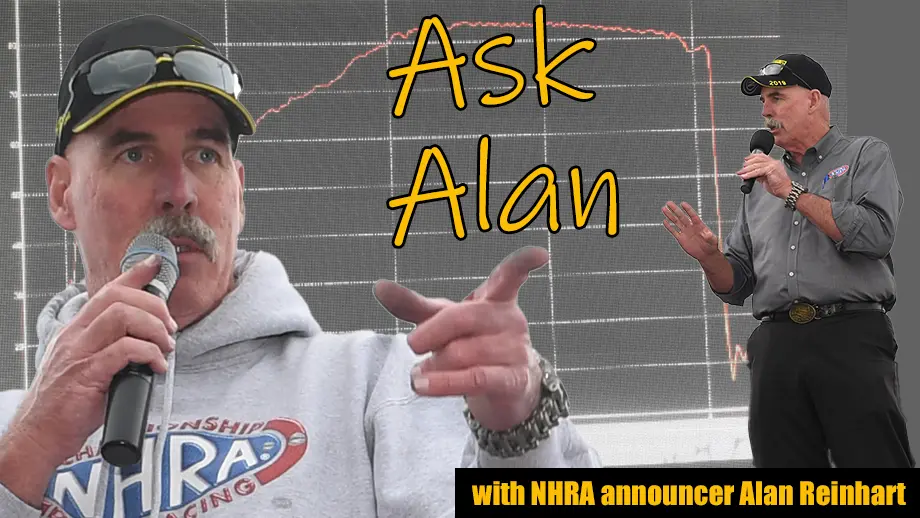
At every NHRA national event, NHRA announcer Alan Reinhart offers fans the chance to send him an email with technical questions about the race cars, the tracks, and the procedures. As part of a semi-regular feature, we’ll share those questions and answers on NHRA.com.
Fans can write to Reinhart at announcer@nhra.com.
Here we go!
You have said about [nitro fuel pumps] drowning a welder at 88 amps. I assume the spark plugs in a nitro car use 88 amps. If the plugs can be drowned and the pipes go wet in a nitro car, why don't they use 100 amps? — Desiree Scheel
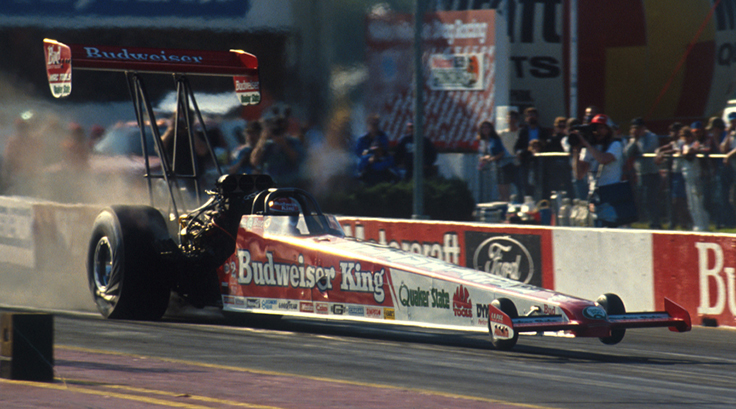
Not allowed. NHRA a few years back put a moratorium on the magnetos.
Back in the day, every time there was an uptick in performance, it was because they made a better magneto. You would put as much fuel as you could burn through the engine until you drown the spark plugs, then when a better magneto came along, you could burn more fuel. When Kenny Bernstein went 300 mph for the first time, he had experimental mags with rare earth magnets, which was groundbreaking technology 30 years ago.
What type of transmission do the Pro Mods run? — Bob Mack
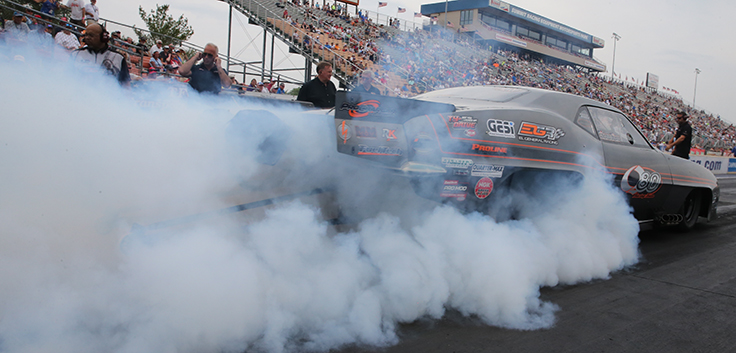
It depends on the car:
- The nitrous cars are allowed a five-speed. Rickie Smith uses a Liberty five-speed with a Ty-Drive torque converter unit and a lock-up converter.
- The blower cars are not allowed a lock-up converter, but they also run a converter drive with a three-speed. For instance, Mike Janis' car (JR Gray) runs a B&J planetary transmission.
- Most turbo cars run an automatic (sort of). Lyle Barnett has the M&M Turbo 400 with a non-lockup converter and a bump button because it needs to be spooled up before the car is staged.
A clutch would still be legal, but I don't know of anyone who still runs one, they have all gone to either a Bruno or Ty-Drive with a torque converter.
If you're interested, look on NHRA's Facebook and search for Torque Converter, I did a video on both the standard and the lockup type.
You said the alignment on the Pro Stock Motorcycles, the wheels wasn't straight, that it's staggered. Are you saying to the center of the chassis the center of the tire isn't in the center of the chassis, it's offset a little? — William Satchell
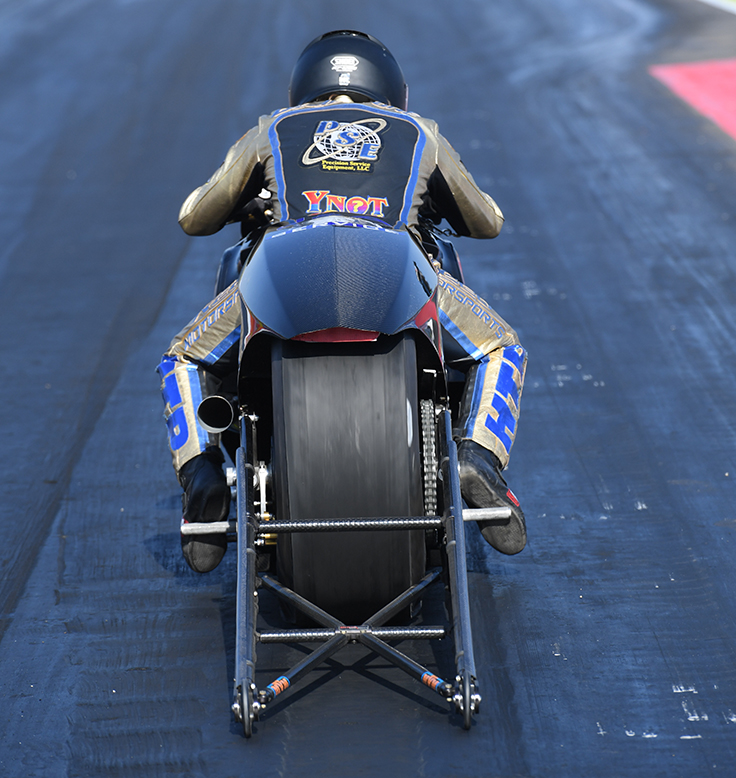
Some Pro Stock Motorcycle teams will skew the rear tire left or right to compensate for the crown of the track or even the wind trying to push the bike one way or the other. We're talking thousandths of an inch, but it is not perfectly straight in the chassis.
I have a question about transmissions and gear ratios in Pro Stock. What are the reasons (pros and cons) to go with more or less gear ratios in the transmission and gears? What would happen if you ran a Gainesville Pro Stock gear ratio setup at mile-high? — Albert Noviello

You adjust gear ratio based on horsepower. Pro Stock is a VERY precise class. If you have more horsepower, you can pull a taller gear. If you have less, you use a lower gear as a crutch. And the 10,500 rpm rev limiter is part of the equation as well.
Let's say your engine produces 1,500 horsepower corrected (and every dyno uses a correction factor to get the numbers). But the car doesn't get the corrected horsepower, it gets whatever the engine actually is producing right now. You know what the perfect gear ratios are to maximize performance with 1,500 horsepower, but what are you really making right now?
Pro Stock engines are reliant on the ambient weather conditions to make horsepower. I always announce the "Standard Correction Factor" (SCF) when we start a Pro Stock session.
So the engine makes 1,500 horsepower and the SCF is 1.02, that means the engine right now in these conditions is putting out 2% less, or 1,420 horsepower, so you adjust the gearing accordingly. Taking it to the extreme. In Denver, we have seen the SCF over 1.30, so you would only be making 1,050 horsepower, and you can't pull near as much gear as you could with 1,500 horsepower, so you change the gearing to get the most out of your 1,050 horsepower.
If in perfect conditions, you can run 6.500 and the weather deteriorates a little, so the car with no changes would run 6.520. Big deal, right? Everyone will slow down .02, but if I change gear ratios, I can go 5.511. That might be the difference in the race, or in qualifying, it might be five spots.
If you ran Gainesville gearing in Denver, the car would bog badly when you dropped the clutch and then be lazy all the way down. Conversely, if you ran the Denver gearing in Gainesville, you would be on the limiter just past 1,000 feet.
If you have a clutch car, try pulling away from a stop in second gear. You can do it, but it's not the efficient way to do it.
The rear gear is where you start. With the rev limiter rule, the cars will run the best e.t., hitting the limiter about 50 feet before the stripe. That's why top speed doesn't mean what it used to. So, you look at conditions and do the math. There is an equation for horsepower weight and speed. Knowing the horsepower from the correction factor, you determine what speed is possible, then you pick a tire and rear gear combination that will get you that speed at 10,500 rpm. After that, you decide what to do with the transmission ratios to get the car moving.
In Gainesville, a 5.29 or 5.33 would be common, depending on the tire size. In Denver, a 5.75 or 5.80 would be the starting point.
Is an altered a vehicle that started on a production line and was altered for racing, and is a modified one that started as a race car? Am I correct in that or do I have it backwards? — James Bennetzen
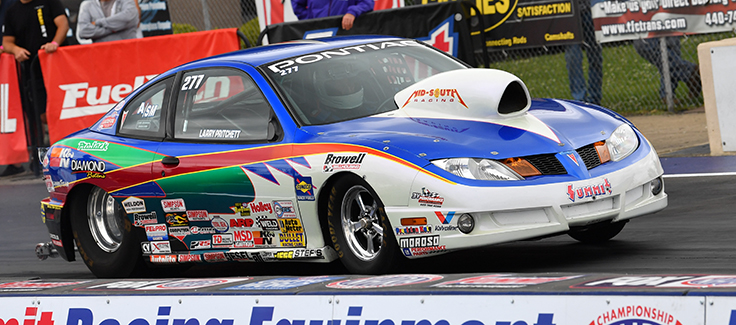
A Modified or Super Modified in Super Stock and Comp started as an assembly line street car and was modified for racing: back-halved, tubed, converted to rear wheel drive, etc. It must retain the stock firewall and floor on the front half of the car.
"Altered" was originally used to designate a center-steer car to differentiate it from a "roadster," where the driver still sits to the left of the driveshaft.
In Comp, an Altered can either be a center-steer roadster, a Pro Stock-type car, or a Super Modified-type car that has had the firewall and/or floor replaced.
You can make a Super Modified into an Altered in that way, but a center-steer car or a Pro Stock-type car can never be turned into a Super Modified. They must have started on the assembly line.






























